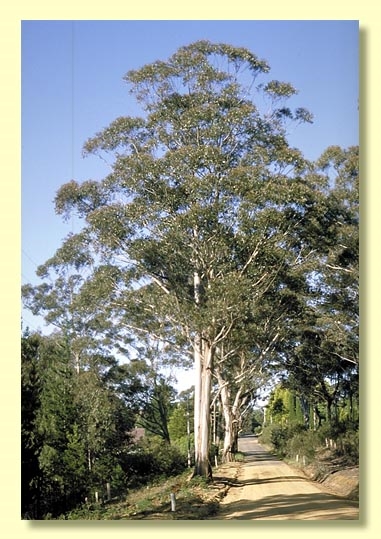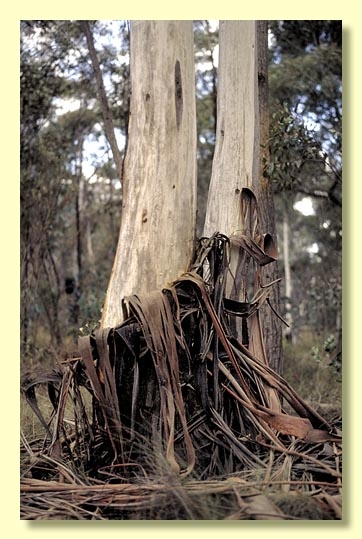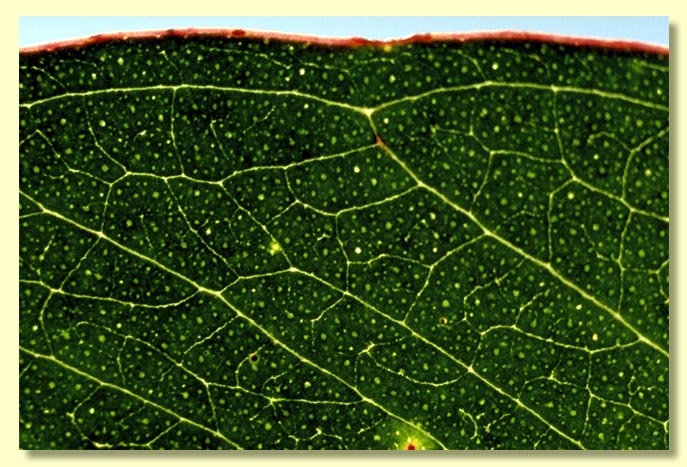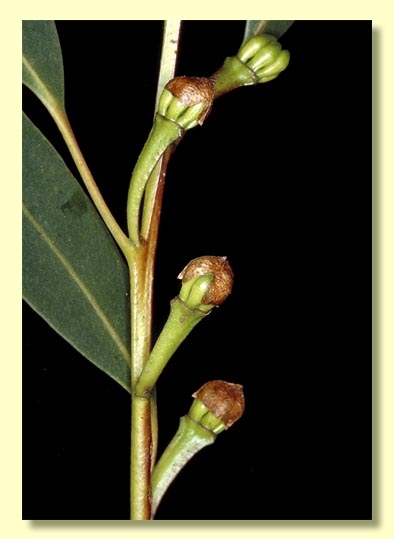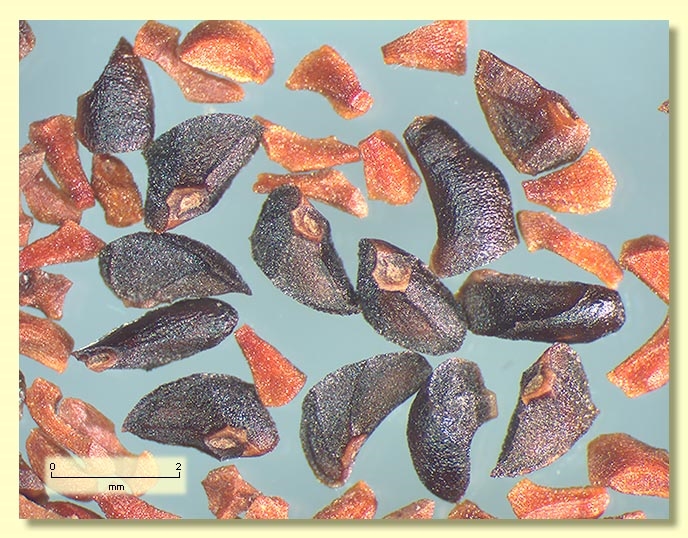Euclid - Online edition
Eucalyptus oreades
Eucalyptus | Eucalyptus | Cineraceae | Fraxinales
Eucalyptus virgata var. altior H.Deane & Maiden, Proc. Linn. Soc. New South Wales 26: 124 (1901) based on E. oreades R.T.Baker; E. altior (H.Deane & Maiden) Maiden, Crit. Revis. Eucalyptus 6: 272 (1922) nom. illeg; T: New South Wales, Adelina Falls, Lawson, R.T.Baker & H.G. Smith s.n., 22 April 1899; lectotype NSW [NSW325376], isolectotypes: K [K000279928], NSW [NSW325377, NSW325378 & NSW325379]; fide Bean, A.R., Telopea 12(3): 316 (2009)..
Eucalyptus luehmanniana F.Muell. var. altior H.Deane & Maiden, Proc. Linn. Soc. New South Wales 22: 713 (1897). T: Mt Wilson, NSW, Apr. 1896, J.H.Maiden s.n.; holo: NSW.
Bark rough for up to 4 m at base of trunk, loose and grey; smooth bark powdery, cream, white, grey or yellow-brown, usually with ribbons of decorticated bark in the upper branches. Branchlets usually not glaucous but in south-east Queensland trees with glaucous branchlets have been noted.
Juvenile growth (coppice or field seedlings to 50 cm): stems square or rounded in cross-section, usually glaucous and warty; juvenile leaves always petiolate, opposite for a ca 5 or 6 nodes then alternate, elliptic then ovate, 8–20 cm long, 3.5–10 cm wide, rounded to tapering bases eventually becoming oblique, discolorous at first but soon concolorous, dull, grey-green.
Adult leaves alternate, petiole 1–2.2 cm long; blade lanceolate to falcate, 7.5–18 cm long, 1–3.2 cm wide, base oblique to tapering to petiole, margin entire, concolorous, glossy, green, side-veins acute, reticulation sparse or absent, intramarginal vein parallel to and just within margin or well removed from it, oil glands island.
Inflorescence axillary unbranched, peduncle somewhat flattened, (1.0)1.5–2.5 cm long, buds 7 per umbel, pedicels 0.2–0.5 cm long. Mature buds broadly fusiform to diamond-shaped, 0.5 cm long, 0.3–0.4 cm wide, scar absent, operculum conical to beaked, stamens irregularly flexed, anthers reniform to cordate, versatile, dorsifixed, dehiscing by confluent slits, style short, stigma tapered, locules 4 or 5, the placentae each with 2 vertical ovule rows. Flowers white.
Fruit sessile or on pedicels to 0.3(0.6) cm long, cup-shaped to cylindrical, 0.5–1 cm long, 0.6–1 cm wide, disc broad, descending or level, valves 4 or 5, near rim level or enclosed.
Seeds dark brown to black, 1.5–3 mm long, pyramidal or obliquely pyramidal, dorsal surface smooth, hilum terminal.
Cultivated seedlings (measured at ca node 10): cotyledons reniform; stems rounded to square in cross-section, slightly warty on lower part; leaves opposite, petiolate, elliptic and discolorous for ca 3 to 5 nodes then alternate, with longer petioles, lanceolate, 9–15 cm long, 3.5–6 cm wide, base rounded to oblique, becoming concolorous, dull, green.
Flowering has been recorded in February and March.
A medium-sized to tall forest tree, mostly smooth-barked or with ribbony butt, occurring on the sandstone escarpment above the Nattai River extending to the higher parts of the Blue Mountains, also the coastal escarpment west of Port Macquarie, and the Binna Burra, Springbrook and Mt Warning areas in the border region between far north-eastern New South Wales and Queensland, and on granite hills of the Gibraltar Range. It has a glossy green-leaved crown and small narrowly diamond-shaped buds and more or less cylindrical fruit with a distinctly thin rim.
Eucalyptus oreades should not be confused with any other species in its natural range, being distinguished by the large, alternate, broadly ovate, grey-green, pendulous juvenile leaves; the short stocking of rough bark shedding in very coarse ribbons at the top where the smooth bark begins; and the fruit with a rim formed by the slightly sunken, more or less level disc; and blackish seeds. It is one of a group of species loosely called the blue-leaved ashes because of their blue-grey to blue-green juveniles. The nearest other blue-leaved ash species at the southern end of E. oreades distribution are E. sieberi, which has hard rough bark over the whole trunk and E. multicaulis, which is a smooth-barked mallee; both have obconical fruit. At the northern end of the distribution, the blue-leaved ashes E. andrewsii and E. olida occur, both with finely fibrous, grey, rough bark at least on the trunk and larger limbs.
In the classification of Brooker (2000) Eucalyptus oreades belongs in subgenus Eucalyptus section Cineraceae series Fraxinales having the following characters: cotyledons reniform, juvenile leaves alternate, bluish to glaucous, adult leaves with acute side-veins, single axillary inflorescences with buds in clusters of seven, buds with single operculum, irregularly flexed stamens with reniform anthers, ovules in two rows, and seeds more or less pyramidal.
The closest relatives of E. oreades are E. fraxinoides, which differs in compact rather than ribbony rough bark on the trunk, and E. delegatensis, with a stocking of finely fibrous rough bark and brown seed. A third related species, E. luehmanniana, is a smooth-barked mallee of coastal sandstone areas, with conspicuous yellowish quadrangular branchlets and dark brownish seed. Together these four species make up Eucalyptus series Fraxinales.

